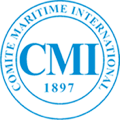Jurisprudence on Maritime Conventions
Introduction
In order to ensure uniformity by way of international legislation three subsequent steps are required:
a) Adoption of an international convention on a given subject
b) Appropriate implementation of the convention
c) Uniform interpretation of the convention
Information on the technique adopted by States parties to a convention for its implementation will help the Depositary of the convention, States parties, courts and lawyers to establish the extent to which legislative uniformity has been achieved.
Information from various countries on judgments in which a convention or its national enactment is considered, interpreted and applied will indicate whether its interpretation is uniform or not and may also contribute to increased uniformity in the future. Similarly, information on commentaries in text books, law journal articles and the like of a convention, its implementation and judgments issued in respect of a convention, may be of assistance to judges and lawyers.
Our project is to contribute to uniformity by collecting and publishing information about the implementation and interpretation of international maritime conventions on a national level.
In order to collect the necessary information from various jurisdictions, we will rely primarily on the assistance of judges, academics, civil servants, practising lawyers and interested persons generally.
You are therefore kindly invited to provide relevant information in English to Francesco Berlingieri at slb@dirmar.it
Associations, organizations and publishers are of course also invited to provide information.
Publication by us of any information supplied will normally be with attribution to our source as well as with customary reference to case, book, article etc.
Manner of Contribution
In order to ensure consistency in the information specimens are provided: Specimen For Implementation
However, we emphasize that if for want of time or otherwise you are unable to submit information in the requested format, please supply the information in whatever form or language the circumstances permit. Some information is obviously better than no information and we will hopefully be able to supplement with information from other sources
A DATABASE of decisions by national Courts on the interpretation of maritime conventions has been established on the CMI website. Its purpose is to make available to judges, lawyers, academics and to the industry, as many judgments as possible from as many Courts situated in as many countries as possible, on the interpretation of maritime conventions, in the hope that that will contribute to their uniform interpretation.
The database is structured with reference to each convention and then for each convention with reference to individual subjects, listed in an alphabetical order, with the indication of the relevant article.
For each judgment there are indicated the country, the judicial authority, the date of the judgment, the names of the parties and the journal where the judgment has been published. There follows a summary of the facts and the head notes.
At present the database contains summaries of judgments that relate to the following Conventions:
-
The Salvage Convention 1910
.pdf 672.37 KB -
The 1910 Collision Convention
.pdf 681.07 KB -
The 1924 BOL And 1968 And 1979 Protocols
.pdf 1.28 MB -
The 1926 Convention On Maritime Liens And Mortgages
.pdf 257.92 KB -
The 1952 Arrest Convention
.docx 58.91 KB -
THE CLC 1969 1992
.pdf 288.05 KB -
The Fund Convention 1971 And Its 1976 Protocol
.docx 22.42 KB -
Limitation Convention 1976
.docx 47.08 KB -
1976 Athens Convention
.docx 15.99 KB -
Hamburg Convention 1978
.docx 18.06 KB -
UN Convention Law Of The Sea 1982
.docx 15.91 KB -
SUA Convention 1988
.docx 16.48 KB -
The Salvage Convention 1989
.docx 28.83 KB
